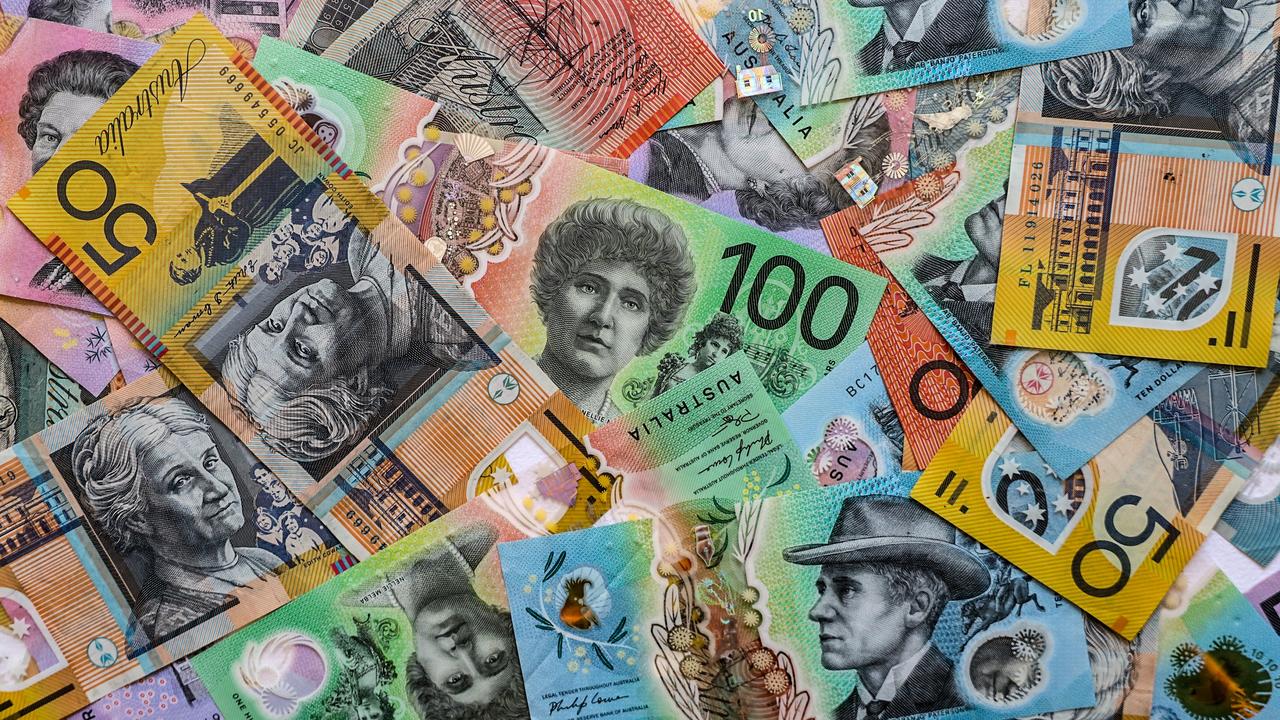Where does our food come from?
DID we bring the Hepatitis A outbreak on ourselves? Maybe. Our hunger for a bargain might be making our food more dangerous.
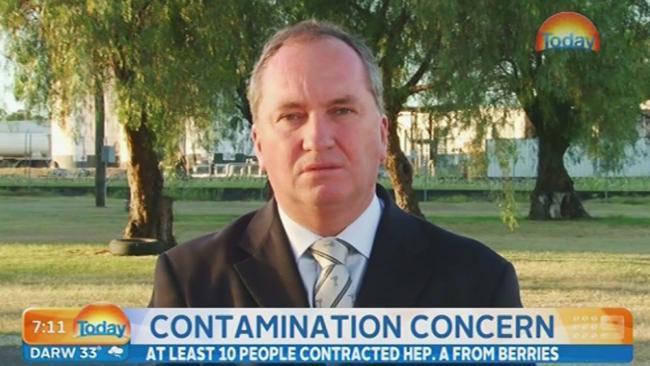
THE recall of Chinese-grown frozen berries linked to a Hepatitis A outbreak has sparked fresh debate about the safety of imported produce and calls to overhaul Australia’s food safety standards.
Federal Agriculture Minister Barnaby Joyce has urged consumers to buy local produce in the wake of the health scare that has left 10 Australians diagnosed with the disease.
“There is a good way that you can avoid all of this and that is to make sure you eat Australian product,” he told the Nine Network on Wednesday.
MORE: Why can’t we see where our food is from?
MORE: Frozen berries polluted by a toxic river
Raspberries appear to be a potential common link, with Victorian company Patties Foods on Tuesday extending its national recall to include Nanna’s Raspberries 1kg packs.
So where exactly does our food come from, and how can we make sure it is safe?
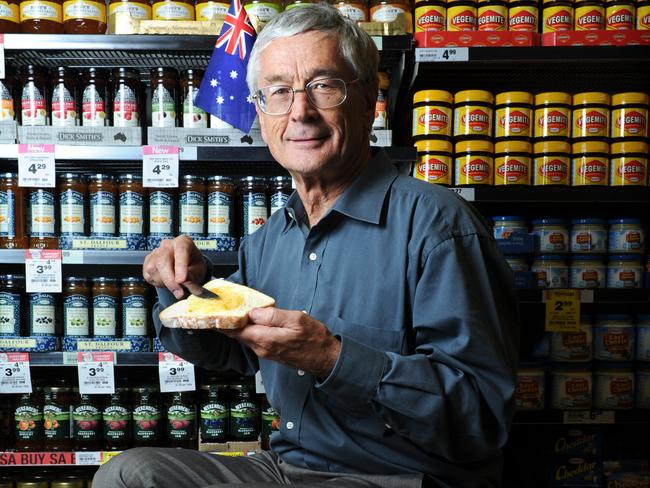
THIS IS WHAT HAPPENS WHEN WE WANT CHEAP FOOD
Outspoken businessman Dick Smith has joined the calls to buy local, hitting out at Aussies always looking for the cheapest option. “People need to understand that if they’re buying cheaper food, because it comes from a developing country they’re going to increase their risk quite substantially,” he said.
“Aussie mothers don’t buy the cheapest car — they want something safer when it comes to their children — but they tend to buy the cheapest food. It’s amazing. I don’t think people understand they’re risking their children’s health.”
He estimated more than 80 per cent of products in the supermarket trolley are either imported or produced by a foreign-owned company.
“Just about everything is imported. Most of the ingredients in MasterFoods products come from China or South America. We grow the best peanuts in the world, but the biggest seller is Kraft, which gets most of its peanuts from South America,” he said.
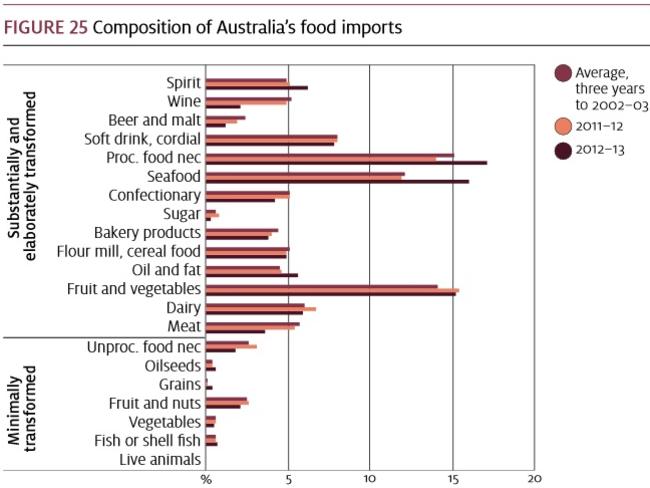
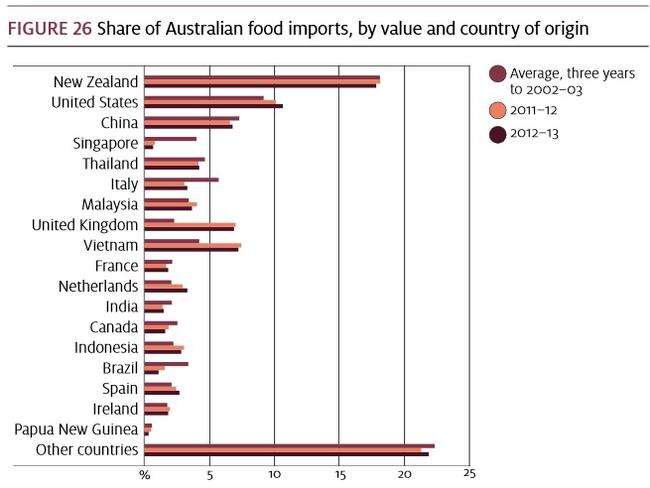
Australia imported $11.6 billion worth of food in 2012-13, a 2.5 per cent increase on 2011-12, according to the most recent figures from the Department of Agriculture.
While New Zealand remains the major source of Australia’s food imports, accounting for 17.8 per cent, or $2.1 billion, China’s share in Australia’s total food imports almost doubled to 7.5 per cent between 2002-03 and 2012-13.
Between 2002-03 and 2012-13, Australia’s food imports from ASEAN countries grew by an average of 10 per cent a year to $2.6 billion.
Australia has been a net importer of processed seafood since 2001-02. We have been a net importer in the combined category of ‘fresh and processed’ fruit, nuts and vegetables since 2003-04 due to the growing imports of processed products.
What makes the issue more complex is that loopholes currently allow some importers of food to circumvent Australia’s labelling requirements by staging imports in third countries. This involves food being imported by one country and then exported to another, so the country of origin may not be the exact country of origin.
Mr Smith said in some cases consumers had no way of knowing where a New Zealand product actually originated. “It’s a very serious problem. The loophole will never get fixed because the big corporations have enormous lobbying power, and most of the multinationals need to bring most of their food from overseas because it’s cheaper.”
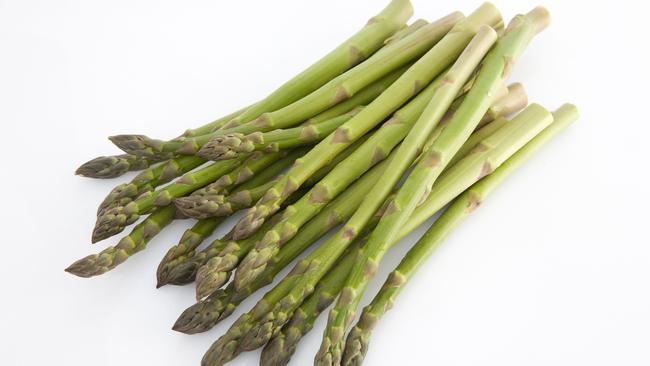
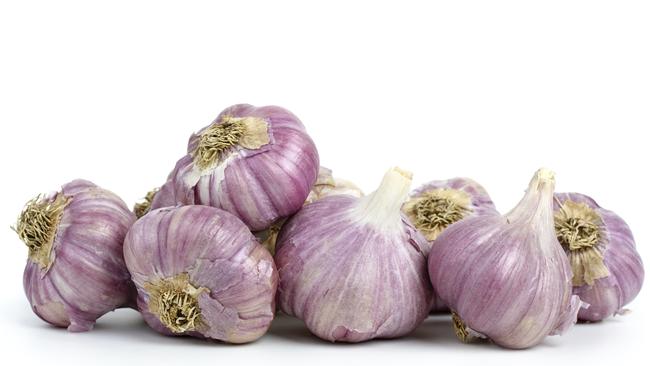

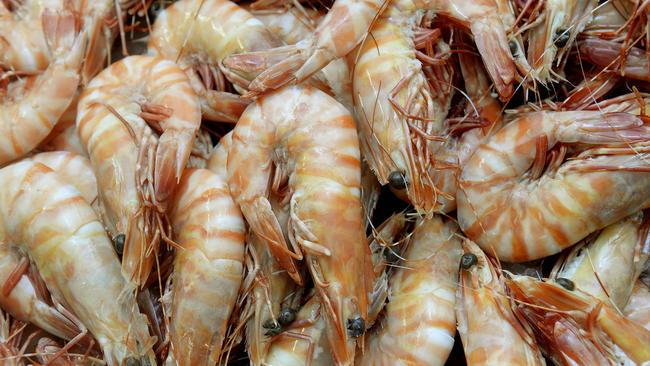
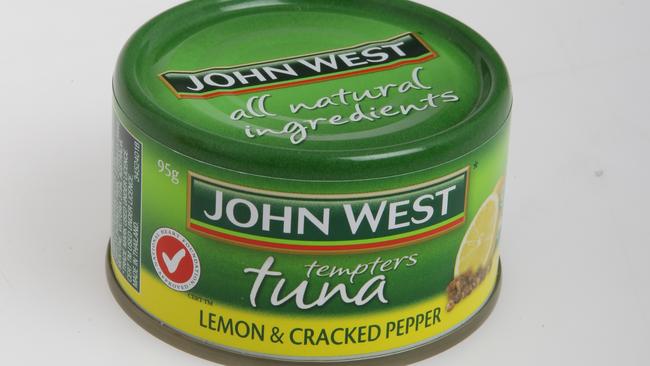

HOW TO PROTECT YOURSELF
Martyn Kirk, associate professor with the National Centre for Epidemiology and Population Health at the ANU, described the globalisation of the food supply as “staggering”. “It’s always amazing to us when we find people in Queensland are eating mangoes from Mexico and oranges from California,” he said.
But he stressed that consumers shouldn’t overreact. “People are up in arms about imported food being worse than Australian food, but Australian food causes disease outbreaks quite commonly,” he said.
The Centre estimates there are around 4.1 million cases of foodborne illness in Australia every year — about one episode every five years for the average Australian. Raw or undercooked eggs caused the most illness, followed by uncooked chicken meat.
Melbourne University senior lecturer in food science Dr Said Ajlouni said there were already requirements that any food imported into Australia be issued with a safety certificate that shows it meets safety requirements.
“Luckily in Australia we have very strict guidelines, we know exactly the hygiene implemented in our factories,” Dr Ajlouni said.
The problem is that Australian regulators don’t necessarily know for sure whether other countries have followed the same guidelines, unless officers undertake inspections of the factories in exporting countries.
“We may need to be more thorough about these certificates and send some person over to view the type of sanitation or hygiene practices because depending fully on a report is sometimes not enough.”

FRESH NOT ALWAYS SAFEST
CSIRO’s research leader in food safety, Dr Kari Gobius, said that the difficulty with imported frozen berries was there was no “kill step”, such as being cooked or pasteurised, to get rid of any potential germs.
“People are consuming fresh food products because they want healthy and nutritious produce, but the downside is there is no process to control (the food safety). People need to be aware that at the very least they’ve got to wash food.”
Dr Gobius said the last major food scare in Australia involved Hepatitis A caught from imported semi-dried tomatoes in 2009, which also lacked a “kill step” during processing.
If people are really worried about fresh ingredients, he said the one extra measure that a consumer could take was to wash their produce in mild disinfectant, and then rinse it thoroughly using large amounts of fresh water.
Dr Gobius said that both suppliers and consumers needed to take responsibility for food safety.
“I think Australia consumers should work out what part they can play in making sure the food they eat is safe,” Dr Gobius said.
“If something comes out of the fridge, make sure it goes back in the fridge, instead of sitting on the bench for a few hours.
“Have an understanding that nine times out of 10, cooking raw food constitutes the kill step.
“People just need to be aware of that and play close attention to storage and cooking instructions on the labels.”
– with AAP

